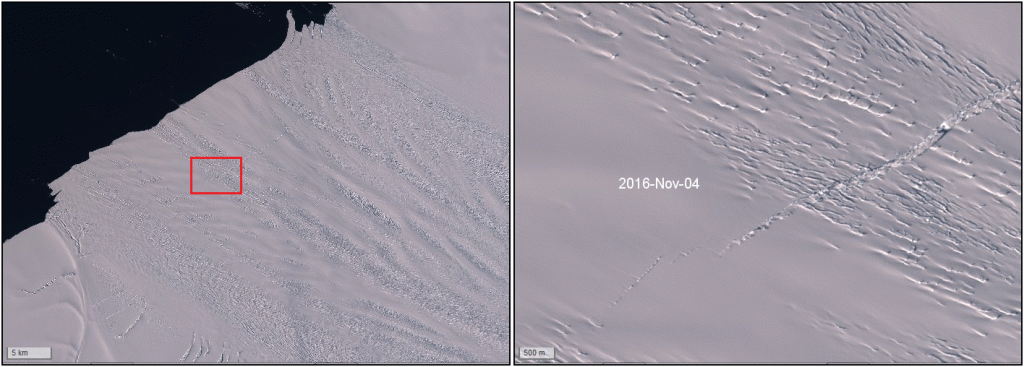Pine Island Glacier rift: 50,000,000 Elvis Fans Can’t Be Wrong
The rift of Pine Island glacier was captured by Sentinel-2A several times since Sentinel-2A is watching Antarctica. However I was not sure if the crack was growing by looking at the images only.
The answer is not obvious from a simple image comparison since this part of the glacier is moving at 10 m per day in summer. The best solution would be to use a GIS software and digitalize the whole crack to compute its length [1] … but my PhD students were already busy. So I made this small online survey. The participants were asked to choose the image which they think has the longest rift without knowing the acquisition dates. The result are unambiguous. The most recent image was selected by 95% of the 63 voters. This means that the rift is actually expanding… unless you think that argumentum ad populum is not a definitive proof of scientific truth?
In the same period the western part also seems to have expanded a little.
Update: a more recent image acquired on Jan 06 shows that the crack is now opening faster in the west (click on the image below to see the animation)
Footnote:[1] See this other disturbing rift in the Larsen C ice shelf, which is now making the headlines https://youtu.be/Sf8kedzFLGI










